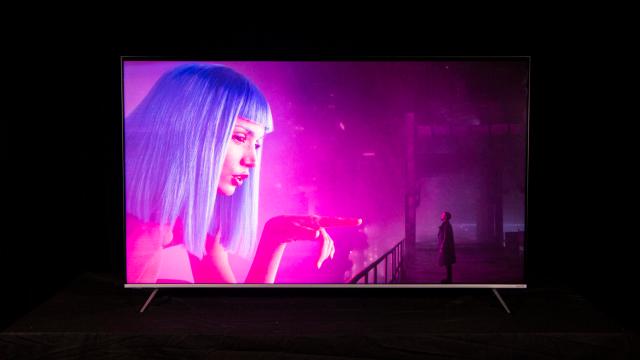There’s a brand new display technology in town, and it’s called mini-LED. Should it be in your next television set? Is it ever going to make its way to your mobile phone? Why, exactly, is it superior to existing screen tech? Here we’ll explain everything you need to know about mini-LED.
First let’s talk about the two main kinds of display technology being used in most TVs, computers, and monitors today: OLED and LCD. The display technology used in today’s OLED (Organic Light-Emitting Diode) TVs produce such great pictures with remarkable contrast because they have pixels that are illuminated individually. Each one can be turned on or off independently of the others, which means, in theory, blacker blacks and whiter whites.
Most other TVs on the market right now make use of some kind of LCD (Liquid Crystal Display) technology. This comes with a variety of tweaks and modifications, but the general principle is the same: These displays have pixels that are lit up either from behind or from the edges of the screen.
That all-in-one approach isn’t great for blacks or for contrast, which is why in recent times LCD displays have started using local dimming: On TV sets that support the feature, dimming can be controlled in several groups or zones across the scene to give you a picture that better approaches an OLED one. Even so, you might still see grays instead of blacks, or a halo of light around bright spots.
Modern LCD TVs typically use LEDs (Light Emitting Diodes) for their backlights, which is why they’re sometimes labelled as LED or LCD-LED TVs, which is all very confusing. When it comes to mini-LED, this is essentially an upgrade on LCD technology: it makes those backlight zones much smaller, and means that backlighting on LCD panels can be much more precise.
At about 200 microns or 0.2 millimetres across, these mini-LEDs are about a fifth of the size of the standard LEDs in use in LCD panels today”and that means thousands and thousands of them can be packed into a screen, rather than the dozens or the low hundreds of LEDs that fit into most panels now.
Mini-LED gives you better brightness than OLED, plus some of the excellent contrast and colour performance (because there are so many more LEDs providing the backlight), without as much of the cost. OLED still has the edge in terms of overall quality, but the gap is narrowing”and maybe not worth the price premium anymore.
But while mini-LED TVs aren’t commonplace just yet, the technology is about to have its moment in the sun with products like TCL’s 8-series. However, something even better is coming in the form of micro-LED. As you can probably tell from the name, this means the LEDs get even smaller”it effectively puts LCD-LED on a par with OLED, in that individual pixels can be turned on and off as required.
The presence of micro-LED doesn’t mean mini-LED is dead in the water: The high cost and the difficulty in manufacturing micro-LED technology at the moment means that mini-LED should have a good few years of powering the backlights of affordable LCD-LED television sets before it gets usurped.
Mini-LED and micro-LED technology are head to mobile devices too. One advantage of mini-LED is its relatively low power draw”and when you’re on battery power that’s much more important than it is when you’re dealing with a television plugged into the wall. MSI has already announced a 17-inch laptop with a mini-LED display that starts shipping this month.
There has been analyst chatter that mini-LED displays could come to the iPad and the MacBook Pro this year too, though considering both product lines have had a recent refresh, it’s maybe a little less likely than it was (especially with the coronavirus pandemic raging on)”we might have to wait until 2021 for a mini-LED Apple device.
As manufacturing processes get streamlined, the technology advances and the associated costs come down, it’s like that we’ll see mini-LED and micro-LED technology appear more and more TVs, and very possible that both technologies will come to tablet and phone displays too. But that’s still some way off. For now, OLED and LCD (for cheaper models) remain the default.
At least now when you see a screen advertised with mini-LEDs, you’ll know what it’s talking about. Just remember that specs are only part of the story though, and mini-LED doesn’t change that”displays can be good and displays can be bad no matter what it says on the box or what hyped technology is used. There’s a lot more that goes into a display beyond a backlight and the little tweaks each company does can make a world of difference. So embrace the technology”but with a nice dose of wariness.
